Are you wondering what is a blog post?
This may seem like a question with a simple answer, but there is more to it than you might think.
In its simplest form, a blog post is an article written by a blogger that is published on their blog.
But what goes into creating an effective blog post that will keep readers coming back for more?
Let’s take a closer look.
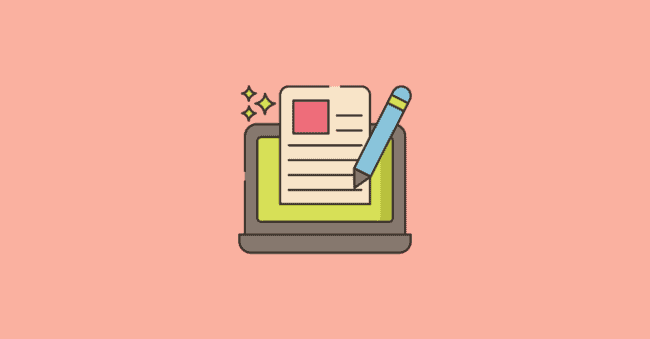
What is a blog post?
A blog post is an article written by a blogger and published on their blog or weblog. Blog posts are often written in an informal, conversational tone and typically focus on a single topic. The blog topic can be about anything from personal experiences to reviews to news events & opinions on current issues.
Additionally, blogs typically have a comments section where readers can exchange ideas and discuss the topics presented in the post.
What is the Purpose of a Blog Post?
The purpose can vary depending on the type of blog, but generally, it serves as a way for blog owners to share information, express their thoughts, attract an audience through Search Engine Optimization (SEO), build an online community, and also make money. These are just some of the benefits of blogging.
People create a blog because it makes it easy to build an online presence. Blogs were simply used for personal updates before but now it has become one of the popular forms of content marketing.
What are the types of blog posts?
There are many types of blogs and each type of blog can have its unique blog topics. For example, blog authors can have a personal blog, travel blog, product or service blog. Each type of blog serves a specific purpose and a target audience.
Personal blogs are often used as online diaries, while travel blogs share experiences and tips about traveling. Product or service blogs are used to promote a particular product or service to individuals and businesses who are ready to buy.
Check out our guide of all Blog Topic Ideas for a comprehensive list of all blog post ideas.
Blog Post Structure
A successful blog post provides valuable information or entertainment and encourages readers to share their thoughts and ideas. Blogs are usually updated regularly with new blog posts that are usually organized in reverse chronological order, with the most recent posts appearing first on the homepage. Each post could include bullet points or other formatting techniques to make it easy to read and digest.
Every post follows a specific structure. Perfecting all the elements will result in an effective blog post that drives engagement and conversion. The elements of a perfect blog post are the following:
Headline
A blog post headline is the heading or title of a blog post. It is typically a brief, catchy phrase that sums up the main topic of the article. The goal is to make readers want to read more by accurately reflecting the content of the article.

Many bloggers spend a lot of time crafting the perfect headline, as they know it can make or break a post.
The headline is the first thing that a reader will see when they come across a blog post. It should be interesting and attention-grabbing to make the reader want to read more. A good headline will also include keywords that are relevant to the topic of the blog post.
Post Meta Data
The post metadata is the information that appears below the headline of a blog post. It typically includes the bread crumbs ❶, publish date ❷, author name ❸, and categories. Sometimes it also includes the number of comments ❹.
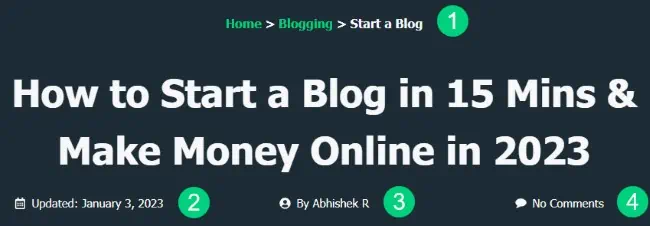
This information is important as it helps readers understand who wrote the article and when it was published. The categories can also help identify what type of content to expect and can also be used as navigation. We will break down each item that is present in the metadata.
Bread Crumbs
Breadcrumbs allows users to see the path they must take from the homepage to get to the current page. They are often formatted as a series of links that represent the hierarchy of the blog’s pages.
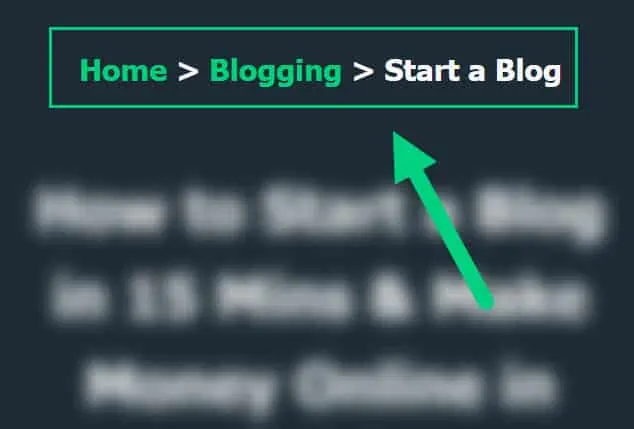
It helps users understand where they are on a website and how they got there. This is particularly useful for large blogs with many pages, where it can be difficult to navigate back to the homepage or find a specific page.
Breadcrumbs are also displayed in search results, providing additional information and context for users.
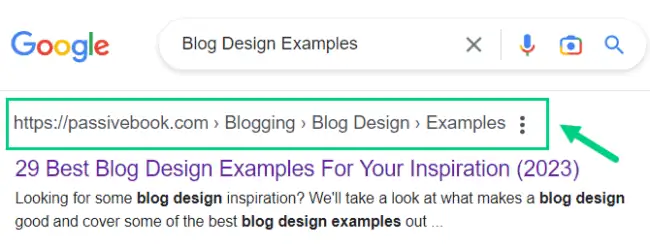
Breadcrumbs also provide a way for search engines to understand the structure of a website and the relationship between pages. Apart from improving the user experience, breadcrumbs also make it easier for search engines to crawl and index your site.
Publish or Update Date
The publish date is the date that the article was first published on the blog. This date is important as it helps readers understand how current the information in the article is.
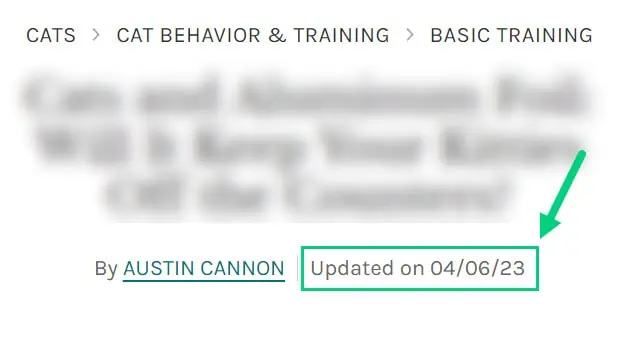
Search engines display the date in the Search Engine Results Page (SERP) so it makes sense to include it in the post metadata.
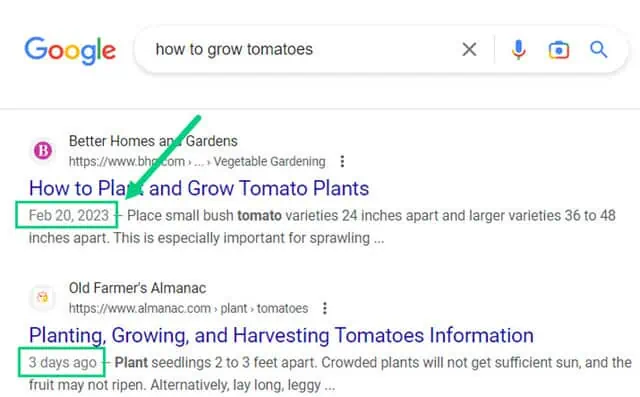
If an article is ever updated, the updated date can be used instead of the publish date to let readers and search engines know when new information was added.
Author Name
The author’s name is the name of the person who wrote the blog post. This information is helpful for readers as it allows them to see who is sharing this information with them.
Some blogs also include the image of the author next to the author’s name. It makes the blog post feel more personal and authentic.

Post Taxonomy
Post taxonomies are used to group blog posts together. The two most common taxonomies are categories and tags.
Categories are broad topics that can be used to group similar blog posts. For example, a food blog may have categories for recipes, restaurant reviews, and cooking tips.

Tags are more specific than categories and are used to describe the individual blog post. For example, a recipe for chocolate chip cookies would be tagged with “chocolate chip cookies”, “dessert”, and “baking”.
Both categories and tags can be used as navigation for a blog. Readers can use them to find similar articles that they may be interested in.
Introduction
The introduction is the first section of the blog post and it typically appears after the metadata. The introduction should give an overview of what the article will be about.
Here are the elements of a great introduction:
❶ Keyword: The exact keyword the article is trying to rank for is included preferably in the first sentence.
❷ Question: Most introductions start by asking questions the article helps answer.

❸ Outcome/Benefit: The introduction should also include the benefit or outcome of reading this article.
❹ Authority: The introduction also talks about why the author is qualified to write this article.
❺ Outcome/Benefit: The outcome or benefit is mentioned multiple times.
❻ Transition: Finally there is a transition into the article itself.
Content
The content is the meat of the article and it should be informative and well-written. The content should be structured using subheadings, paragraphs, and lists.
Subheadings help to break up the text and make it easier to read. Paragraphs should be used to further break up the text and they should be concise and to the point.

Bullet lists can be used to highlight key points or steps in a process.
Images, videos, and infographics can also be added to the content to help break up the text and make it more visually appealing.
Internal links to other blog posts or external links to other websites should be added to the blog content to help readers find more information on the topic.
Images
A picture is worth a thousand words. Images are a great way to break up the text and make a blog post more visually appealing and easy to digest. Images can also be used to illustrate a point or highlight a key takeaway from the article.
When selecting images for a blog post, it’s important to use high-quality, relevant images. Relevant images are those that are related to the topic of an article. Fluff images (see below) that add no value to the content should be avoided.
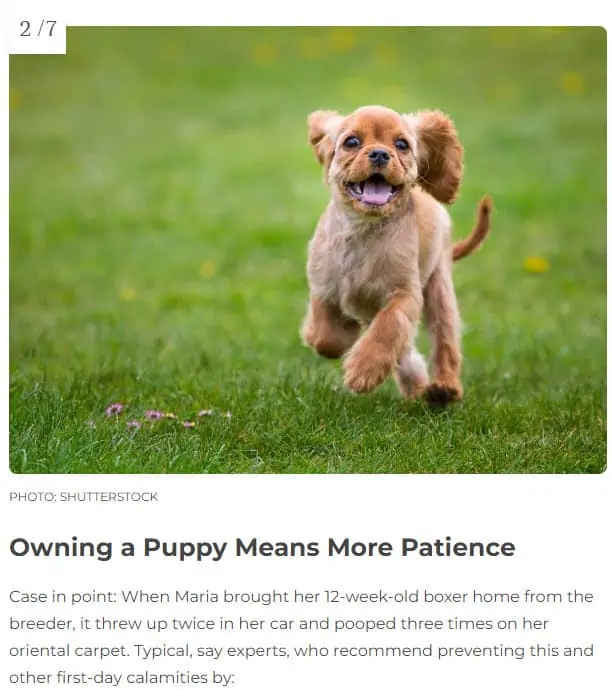
In addition, all images should be properly formatted with Alt text. Alt text is a brief description of an image that is used by screen readers for the visually impaired.

Video Embeds
Videos are another great way to break up the text and make a blog post more visually appealing. Videos can also be used to illustrate a point or highlight a key takeaway from the article.
When selecting videos for a blog post, it’s important to use high-quality, relevant videos. Relevant videos are those that are related to the topic of an article. Here is an example of a video embed:
In addition, all videos should be properly formatted with captions. Captions are a transcript of the audio for a video. They are used by people who want to watch the video silently on mute. It is also used by search engines to understand the content.
Lead Magnet
A lead magnet is an opt-in offer that is used to capture a visitor’s email address. Lead magnets can be in the form of an e-book, checklist, cheat sheet, worksheet, or template.

They are typically offered in exchange for the visitor’s email address. Lead magnets are a great way to grow an email list.
Conclusion
The conclusion is the last section of the blog post and it should summarize the main points of the article. It will restate the benefit of reading the article ❶.
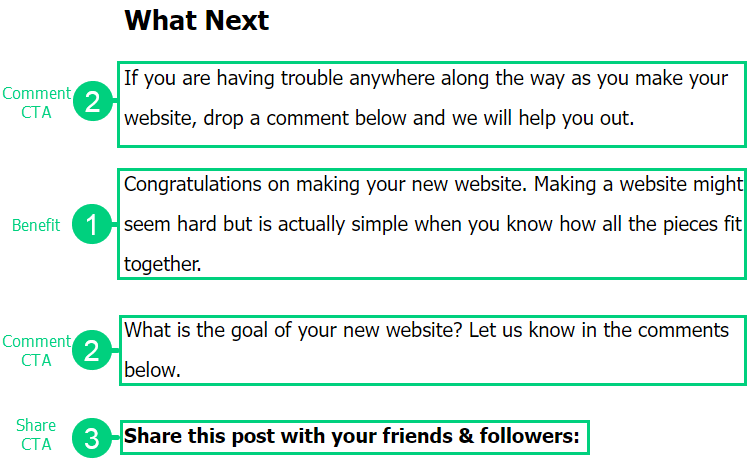
It should also include a call-to-action (CTA) that encourages readers to take a specific action. The CTA could be to sign up for a newsletter, download a lead magnet, purchase a product, leave a comment ❷ or a share post ❹.
Author Bio
The author bio is a brief description of the author that appears at the end of the blog post. The author bio should include the author’s name, title, something interesting about the author, and social media links.
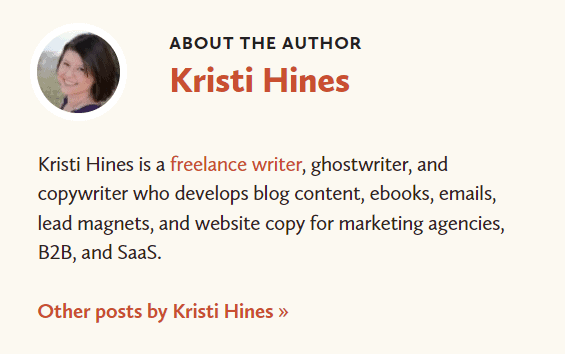
An author helps build trust with readers. Blogs that accept guest posts use the author’s bio to help their readers know more about the guest author.
Social Share Buttons
Social share buttons are typically added to the end of a blog post to encourage readers to share the article on their social media channels. The most common social media platforms to share a blog post are Facebook, Twitter, Pinterest, and LinkedIn.
Some blogs like ours have a floating share button on the side of the blog post.
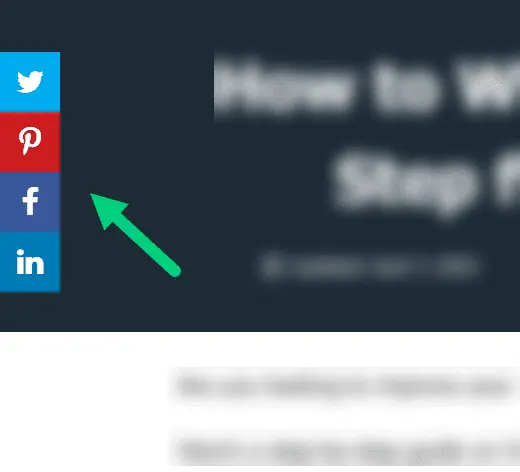
Comments
Comments are typically turned on for most blog posts. This allows readers to leave their thoughts and feedback on the article.
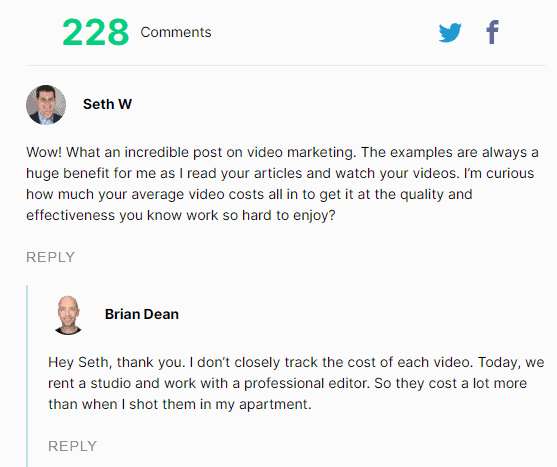
Some bloggers moderate their comments to ensure that they are relevant and respectful. Other blogs just disable comments completely to avoid doing any moderation.
How to Write Your First Blog Post
Now that you know the basics of what a blog post is, it’s time to learn how to write your first blog post.
If you don’t have your own blog yet, then you can follow our guide on how to start a blog that will take you through the process step by step.
If you have your own blog, check our in-depth guide on How to Write a Blog Post which will take you through the process step-by-step.
Here is a quick summary of the key steps that you need to follow to write a great blog post:
1. Pick a topic
The first step to writing a great blog post is to select a topic that is interesting and relevant to your audience.
2. Do your research
Once you have selected a topic, it’s time to do your research. There are a few different ways that you can conduct research for a blog post:
- Use Google search
- Check out Google News
- Use social media
- Use forums
- Go to the library
3. Create an outline
The next step is to create an outline for your blog post. This will help you organize your thoughts and ideas before you start writing.
4. Write the blog post
Now it’s time to start writing your blog post. Be sure to include all of the sections that we discussed earlier: headline, intro, content, conclusion, and call-to-action.
5. Edit and proofread your blog post
Once you have written the blog post, it’s time to edit and proofread it. This will help ensure that your blog post is error-free and ready to publish.
6. Choose a featured image
A featured image is an important part of a blog post as it can help capture the reader’s attention. Be sure to choose an image that is relevant to the topic of your blog post. You can create a custom image with Canva.
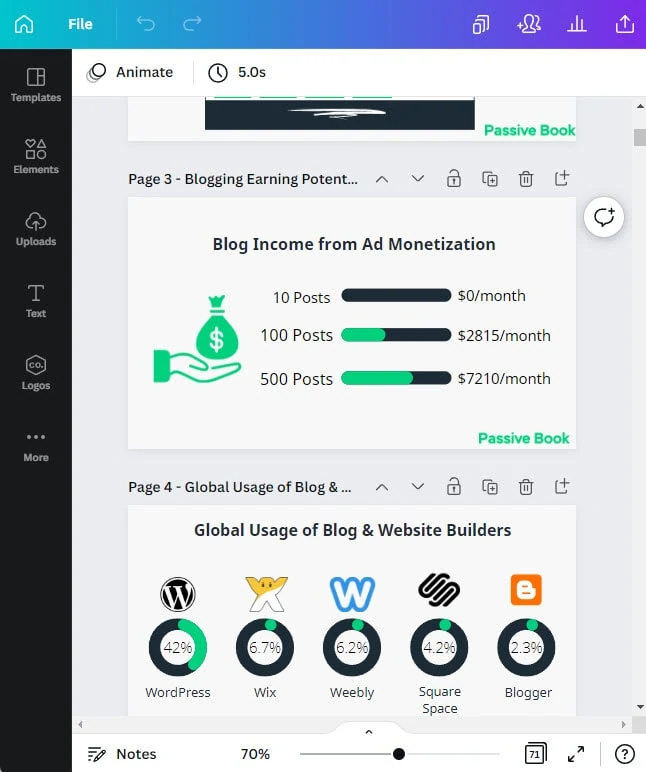
7. Publish your blog post
Once you have edited and proofread your blog post, it’s time to hit the publish button!
8. Promote your blog post
The final step is to promote your blog post. There are a few different ways that you can promote your blog post:
- Share it on social media
- Email your list
- Reach out to influencers
Examples of Good Blog Posts
Now that you know the basics of writing a blog post, let’s take a look at a few examples of a good blog post:
- How To Posts: How to Grow Tomatoes From Seed in 6 Easy Steps
- List Posts: 85 Best Vegan Recipes
- Definitive Guides: Video Marketing: The Definitive Guide
- Reviews: Canon EOS R10 Camera Review
- Question Posts: How long does it take to form a habit?

Conclusion
We hope this guide helped you understand what is a blog post and the different elements that make up the blog post.
If you have any questions you can post them in the comments below.
Check out the Blogging Hub for all our blogging guides to build and grow a six-figure blog from scratch.
Share this post with your friends & followers:
